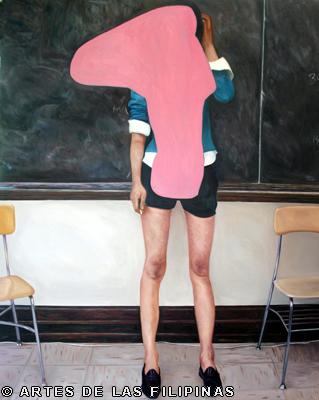
Black Board (2007)
YASMIN SISON'S UNFLINCHING ART
by: Christiane de la Paz
April 2010 -- In the early years of her artistic direction, Yasmin Sison began experimenting with abstract expressionism. Utilizing a rich knowledge of form and color, her gestural paintings included bright and splashy colors, expressionist interiors and figures that are rob of identity and individuality. What Sison aims to achieve during this phase is to paint subjects that would complement her growing concern with form, space and color. Sison then moved toward representational imagery and has since made a mark with her unflinching portraits of children, capturing them in their sad, happy, curious and playful states as well as their physical and psychological transitions. Over the years, her perceptive reading of her subjects, her strong and polish technique and her ability to connect with the viewers made her works memorable and even disquieting to critics, collectors and her peers. Despite her modest success, Sison continues to foster her budding artist’s knowledge, experience and skills to make way for a more conceptual approach to her works. In this interview, Yasmin Sison tells her rich educational background, her stint as a pre-school teacher, her early years as a member of the group, Surrounded By Water and how she finds joy and freedom in straddling the images of instinctive abstract gesture and representational subject matter in her growing body of works.
What was your life like after graduating from the University of the Philippines in 1998?
It was fun and difficult at the same time. I was doing and seeing and exhibiting art that I liked with a group of like-minded friends. There were more time to think about my work and those of my peers and experiment in doing different kinds of art. We made zines, concocted shows and collaborated works with other artists. We got to run our own gallery space and met lots of different artists. The downside was, we didn’t have the moolah.
Was Fine Arts your first course?
My first course was Humanities which is now called Art Studies in UP. I graduated in 1992. I had a minor in Fine Arts.

Blue Dress (2007)
Why Humanities?
I didn’t know what I wanted to take after high school. All I know is that I hated Math and that I loved art. A friend of my mom was a professor of Humanities in UP then and recommended the course to me. I thought the course was perfect, lots of art with only Math 1 as a subject.
What made you decide to pursue fine arts as a second degree?
The two are related. I thoroughly enjoyed the theory part but I also wanted to make art rather than just look or critique it.
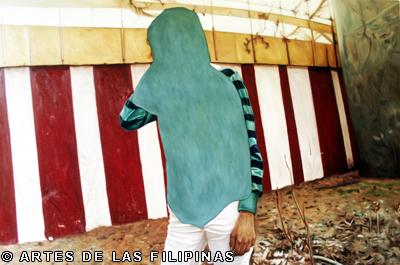
Carnival (2007)
While you are studying Humanities, were you already good at drawing or painting or did you learn the ropes as you go along with your subjects
I wasn’t any good. I just loved doing it.
What was your favorite subject in college?
I loved my art history classes. I especially liked looking at their moldy art slides in their air conditioned rooms as those were the only air conditioned rooms at AS during that time. I loved most of my major subjects in Fine Arts except the ones with the lazy teachers, who rarely showed up in class or the ones who did go to class but just wrote lame projects on the board for us to do and then disappears afterwards.

Float (2007)
Did you also go through a semester of doing the props for the Lantern Parade?
Fortunately and unfortunately for me, I was put into the second year section because my minor subjects in Humanities were credited so I wasn’t required to make the FA props for the Lantern Parade.
Who are your contemporaries in UP?
In Fine Arts, Mariano Ching, Alvin Villaruel, Wire Tuazon, Keiye Miranda, Geraldine Javier, Eric Roca, Eric Sausa, Vincent Padilla, Katya Guerrero, Mike Munoz. A lot of my batchmates pursued careers as visual artists.

Jump (2007)
Who are the star students during your time?
Katya Guerrero. All of us were I guess average compared to her.
Where do you usually hang out in UP?
In our classroom in Fine Arts. During those times we stayed there all day even overnight if we were finishing a plate. Lena and I were playing around the idea of starting a band. That was before until I realized I couldn’t play but mostly I was obsessed with art.
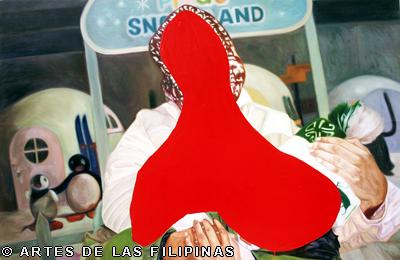
Sundae (2007)
Are you or have you ever been a teacher’s pet?
Not that I know of.
Was UP your only choice of university for your college education?
I took exams at La Salle and St. Scholastica as back ups but UP was my first choice. Tunay, Palaban, Makabayan!
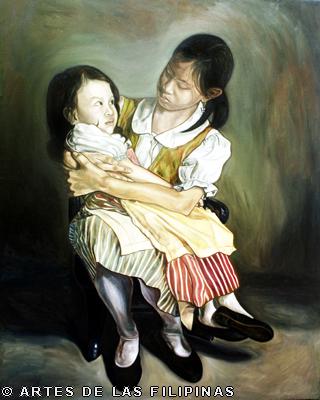
Gingerbread Girls (2007)
After graduating, what was the first job you applied for?
After Art Studies, I took up eighteen units of education. My first job was assisting Emong Borlongan at the Cultural Center of the Philippines when he was teaching drawing at their summer workshop in 1992. I taught grade school English and art full time for a year and after that I pursued Fine Arts. I taught Humanities and Fine Arts at St. Scholastica after that.
After this stint, did you have another job?
I taught for about two to three years in St. Scholastica’s while we helped Wire Tuazon run Surrounded by Water. After we closed the gallery, I taught pre-school in Cavite for another 4 years before working as a full-time artist.
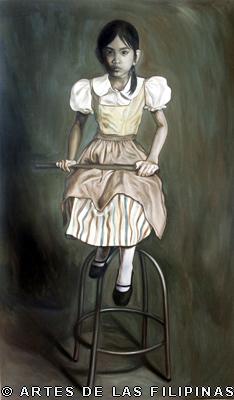
Gingerbread Girls (2007)
You first entered the art scene in 1998, what was the status of the art scene during those time?
During that time, the Salingpusa’s style was the most copied style in art contests. There were only a few established galleries at that time with their own roster of artists so it was pretty hard for us to enter the art scene. We had to create our own scene along with other artists of our generation. A bunch of my classmates would get together to paint and talk. We eventually tried applying for group shows. One of our first shows was with Joseph who then worked at the Australian Center. This was before Wire came up with Surrounded By Water. We also did shows at the CCP but we mostly had our solo shows and experimental works at Surrounded. Bobi of Hiraya was the first gallery to be interested in showing our works but not after a rigorous process of talk. He eventually conceptualized a series of drawing shows at the second floor of the Hiraya Art Gallery for several of us.
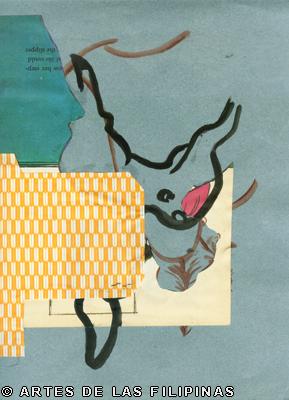
From the Pre-School Files (2008)
What was the concept behind Surrounded By Water?
Surrounded By Water was founded by Wire Tuazon. It was named so because the first gallery was in Angono, Rizal. The basic concept was probably what Neo-Angono is today. It was supposed to be an alternative to the established art around Angono, Rizal during that time. When a space was offered to Wire for free in Mandaluyong he asked us to help him man it. There was Wire and Keiye Tuazon, Mariano Ching, myself, Geraldine Javier, Jonathan Ching, Lena Cobangbang, Jason Oliveria, Louie Cordero, Eduardo Enriquez, Amiel Roldan, Mike Munoz and later Cristina Dy. With the Mandaluyong space, the concept expanded to showing emerging and experimental art in and around Manila. Basically, art that wouldn’t be shown in regular galleries then since there were so few and even fewer galleries that took in emerging young artists unlike what has been happening today.
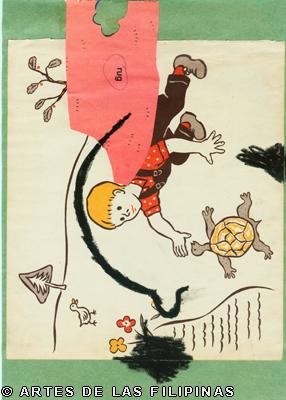
From the Pre-School Files (2008)
Tell me about your first exhibit.
My first exhibit was this big show of six by four feet works curated by Roberto Chabet at the Cultural Center of the Philippines. It was exciting and we were excited to be included alongside established artists while we were still students. The painting is still with me.
What was the first gallery that carried your works?
My first solo exhibit was when I was in my third year college with West Gallery at Megamall in 1996 but that was kind of a fluke. Nilo Ilarde was supposed to have a show there but when he backed out, Sir Chabet gave me the slot. I think I sold two or three paintings but when I applied there on my own steam after I graduated, nothing happened. Hiraya Art Gallery was the first gallery that I applied to exhibit my works.
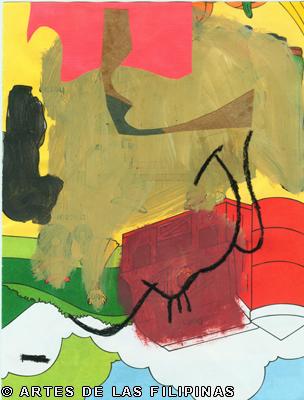
From the Pre-School Files (2008)
For the ideas of your own exhibitions, how do you try to be different in concepts and executions?
I try to make different projects with each show but I usually make works that are part of a series so a group of work will be part of a certain thing I’m thinking about or working on for several years while some are about ideas that I have been thinking about more recently or have only pondered on and now am thinking of doing a project on. My works are mostly about memories so I draw my ideas from just about anywhere, from books I’ve read, magazine pages, the Internet, pre-school, my son, music and even the landscape outside.
The works you have that are on exhibits and in private collections are mostly about children. Who are your models for these children?
I actually have more works and exhibitions of paintings with the figure erased from them. I started making the paintings of children when I started teaching pre-school. My models were my students, my nieces, nephew and my son.

From the Pre-School Files (2008)
Was there ever a time when you found yourself in a situation when your idea for your own exhibit has been executed by another artist?
Not really. But because my works are kind of in the figurative, photo-based realm, it can’t be helped that certain works sometimes look similar with those of other artists but I guess it’s like writing, you can talk about the same things but you have your own voice and you have your own handwriting and your own experiences informs your work with something that will truly make it your own. I try to keep my works as authentic as I can in relation to my own experiences and interests.
Do you try to improve this idea for your next exhibit or do you come up with a new one?
I usually try to push my work somewhere and when I can’t push it, I put it aside and think of another project but I go back and forth between ideas from time to time.

My Picture (2008)
Have you ever attended an exhibit by another artist which impressed you?
I’ve told you about the one with Elaine Navas’ Papaya. There was also Pacquing’s solo show at the Art Center and Julie Lluch’s retrospective show in 2009. But the very first Philippine art show I was blown away was the 13th artist award show in 1988, this was before I entered college. I didn’t know anything about Philippine art or much about art. But when I entered the CCP and I saw this upside down marble lady with hooves for feet and with a fetus coming out of it by Agnes Arellano and this meal made of eyes and body parts by Boogie Ruiz and the box art by Roberto Feleo and paintings and installations by Popo, Gerry and Bubbles. It was a big wow! It was mind blowing for me. I didn’t know art could be like that. Each time I see a fantastic show, my heart wells up and I get this excited feeling like getting to see a favorite movie star or something to that effect. It’s a high that gets me teary eyed and goose fleshed. It makes me excited to make art.

Carousel (2008)
When you are in the process of working, who exactly is the viewer you have in mind?
Mainly myself because I’m the one staring at the work day after day.
How long does it take you to complete one work?
Two weeks to a month or more.
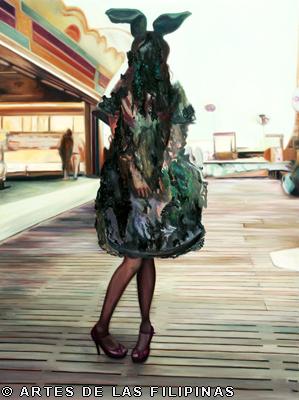
Board Walk (2008)
What are the factors that you consider in terms of pricing your works?
Size, technical difficulty in achieving the work, time spent making the work and my attachment to the work.
What has been the most ambitious painting you have completed?
I don’t make ambitious paintings. The most ambitious show I have done was Into the Woods at the Art Center last year since the conceptualization and completion of the work took more than a year.
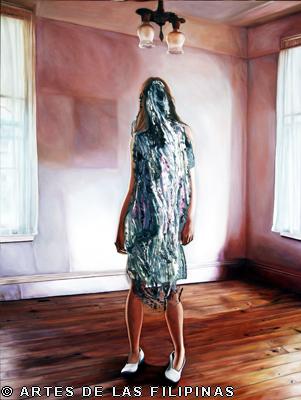
In The Pink (2008)
How many exhibits have you had so far? What has been the most memorable?
More than fifty. My first solo show was the most memorable one.
Do you agree that the first exhibit can make or break his career? Did this apply to you?
No. My friends from school came to my exhibit. Nobody took notice of my work. I’ve been doing that series for more than a decade and it’s only recently that people have taken an interest in it. It must be the times.

Violets (2008)
Are you a member of any artist’s group?
If Surrounded By Water was an artist’s group I would have been a member but we’re like a disbanded band that went on their our solo careers.
Did you join any artist’s organization in college?
No.
What do you think are the advantage of being part of an artist’s group?
There’s a lot of support going on especially when you’re starting out. You get people to bounce ideas with, you get to do a lot of things you usually can’t do on your own like projects that require the help of a lot of people. I like the participatory aspect of it where each of you has a voice and you come up with something better that the one you can think of when you’re on your own. Painting is such a solitary activity being in a group that was interested in the same thing as I was gave my own paintings perspective and it helped me continue putting art at the forefront.
What about its disadvantages?
The usual disagreements about decision-making, I guess. In our group, I think the lack of finances eventually killed us.

White Roses (2008)
Have you ever won any important awards?
The CCP 13 Artist award in 2006.
Do you think awards help make a painter become commercially recognized?
Probably. It depends. Maybe for the collectors, they do. I don’t put much value to awards but I guess it does help make the work be more “commercially viable.”
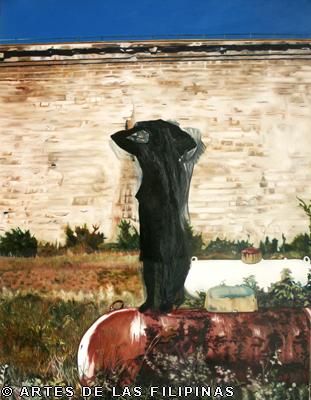
The Wall (2008)
Do you think a painter can become commercially successful without receiving any awards?
I’m thinking if I know someone successful financially and famous to boot who hasn’t won an award. Philippine society likes giving out awards a lot.
Is this something that you mind? Do you like the idea of agencies or groups handing out awards here and there? How do you qualify which ones are important?
I don’t believe that garnering awards or winning in contests or even getting high auction prices is a measure of how good an artist is.
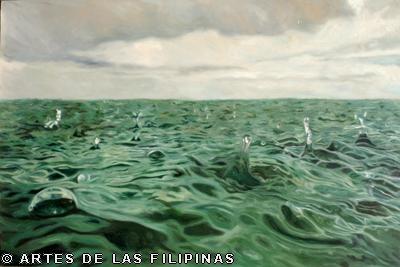
Flow (2008)
Whose style were you drawn to painting during your student years?
I liked to look at Alice Neel’s paintings a lot when I was a student and also Motherwell’s paintings and collages and I absolutely loved Julie Lluch’s sculpture. I still do.
Have you ever tried your hands in sculpting like Lluch?
Only in college but not in clay.
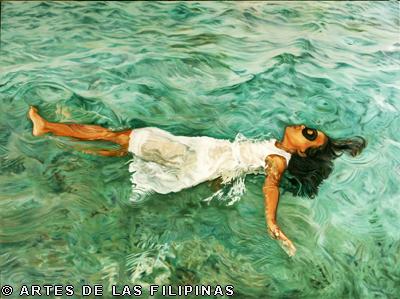
Flow (2008)
In the history of Philippine art, which works of past painters do you still find relevant today?
Felix Resurrecion Hidalgo, Galo Ocampo, Jaime de Guzman, Ang Kiukok, Onib Olmedo. I probably missed out on a lot but I haven’t opened my Philippine art history book lately. I find these guys relevant because I still find it exciting to look a their works today. I don’t find it dated and mostly they still have an influence in contemporary visual art.
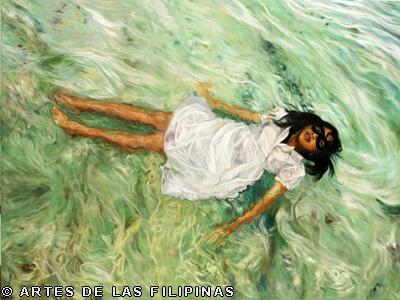
Flow (2008)
Whose works can you not relate with?
None in particular but those works that look like they’ve gone through a factory mill.

Cast (2008)
When you mature as an artist, which local painters had an influence on your art?
When I was starting out, I saw Elaine Navas’ painting of a papaya at an exhibit and I was completely blown away. I wanted to be her when I grow up. But I think Roberto Chabet has the most influence on how I think about making works for exhibitions since he taught us for almost three years and he made us do all these projects and made us watch all these videos and look at all these books and magazines when everything was still analog.
What about foreign influences?
A lot. Right now it’s mainly photographers like Diane Arbus, Kathy Grannan, Alessandra Sanguinetti and installation artists like Phoebe Washburn, Jessica Stockholder and Ann Hamilton.

Change in the Weather (2008)
Have your parents or siblings seen your works?
Yes. They like some of it and they don’t like some of it. But they’re 100 percent supportive of my career even when I wasn’t earning any dough re mi from it.

Change in the Weather 2 (2008)
Did you ever give a work to your parents as Christmas or birthday presents?
Yes, to my mom. The first painting I did during high school.
Who handles the business side of your profession?
The galleries I work with. West, Mag:net, Finale, Blanc, Valentine Willie.
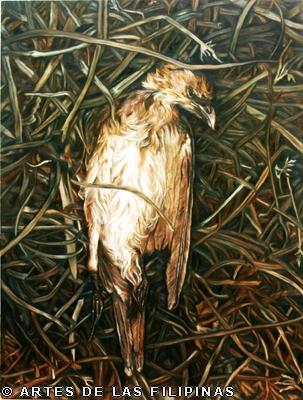
The Bird and the Fox (2009)
Is there any gallery that you will not consign your works with?
I’ve heard of unscrupulous galleries from artist friends so I wouldn’t want to show my works there. Most of the galleries I’ve worked with have invited me from way before. Others I’ve applied to and would apply to especially if they have a terrific place, a good program and are good to work with.

Huffs and Puffs (2009)
Do you have an idea of the profile of collectors who buy your works?
Some of them. Male and female. In their 30s to 50s. Artists, business and finance people mostly.

The Owl and the Pussycat (2009)
What has been the best compliment said about you or your work?
I liked Lisa Ito’s blog about my exhibit the Punky Brewster Sessions. Sher wrote: “In the course of freelance writing for galleries, I guess there are times when some art works are personally striking (and exciting) in a significant way: not only in terms of exquisite visuals but also in their contextual significance to myself as a viewer. The works may or may not be overtly “political” in their imagery and themes, but nonetheless make good sense when understood in the context of these disturbing times. At their best, these are works that have the power to make us think of–or rethink–relations between prevailing realities. I think that was the case when I saw Sison’s paintings for this show.”

The Confrontation (2009)
What have you been criticized of?
That my work looks like someone else’s work but that’s just for people who haven’t followed my career from the beginning.
Where are the Sisons from? Can you tell a bit of your personal background?
The Sisons are from Pangasinan by way of the Davao Penal Colony in which my grandfather was a supervisor. I didn’t grow up with them. I was raised in my maternal grandmother’s ancestral house with my grandparents, uncles, aunts, sibling, parent and several cousins. My mom is an environmental activist. My brother is a farmer, my husband is a visual artist. I have a five year old son.
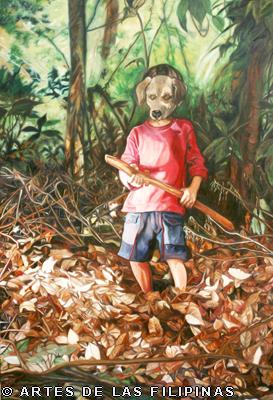
Spoiling For A Fight (2009)
Is Cavite your hometown?
It is. I was born and raised here. Our family has lived here for several generations.
Where did you have your grade school and high school education?
In Silang Elementary School and in Cavite Institute.

Delicate Earthquakes (2009)
Can you describe your working studio?
I share a garage type studio with my husband. My husband helps me stretch the canvases and we clean up together but mostly the studio is a mess especially if we’re working on something.
Where do you source your canvases and paints?
Deovir, National Bookstore, The Oil Paint Store once, anywhere I can buy it.
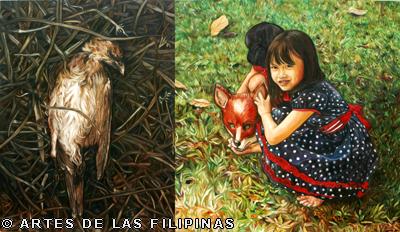
The Bird and the Fox (2009)
Is there a particular brand of paint that you are most comfortable with?
I’m a Winsor and Newton girl. I like this brand because the paint is rich and thick. I hate runny paint.
How do you document your work?
With a digital camera.

Bent (2009)
Do you ever sign your name in your canvas?
I sign them at the back. My signature sucks big time.
What is that characteristic that viewers should take note to identify your works?
I think it would be more exciting if my paintings change over time and with my own experiences and interests. It doesn’t matter if they identify it with me or not as long as viewers will look at it as a good piece.
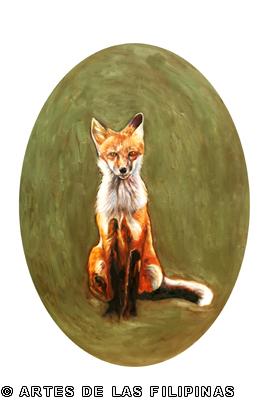
Back to Now (2009)
Do you like to read books?
I love books. My husband and I are second-hand art book hogs. We totally save up for contemporary art books and magazines and gobble up cheap ones on sale. At present, I’ve been hearing audio-books while painting. Neil Gaiman’s Anansi Boys was a really good audio book. The last books I’ve read were the Nodame Cantabile Series and Her Fearful Symmetry by Audrey Niffnegger who is also a visual artist. I enjoyed them both immensely.
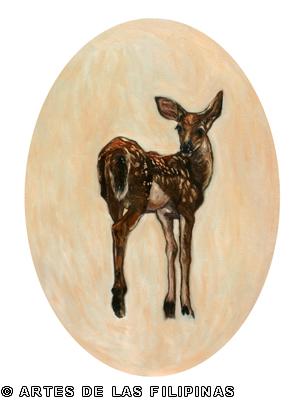
Dreamer’s Who Wake Up
What is your regular working schedule? Do you maintain like an 8-6 PM type of schedule or do you only paint when you are in the mood?
9 AM to 4 PM or before the sun goes down from Monday to Friday except when the deadline looms close.
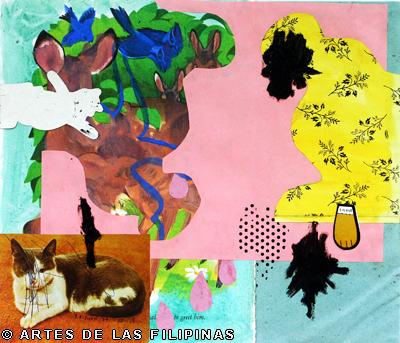
Thumper’s Song 15
How do you try to motivate yourself when you are not in the mood to paint?
Having the weekends off as a break from painting motivates me to paint the next week. Also thinking of different art projects other than painting motivates me to do more art.
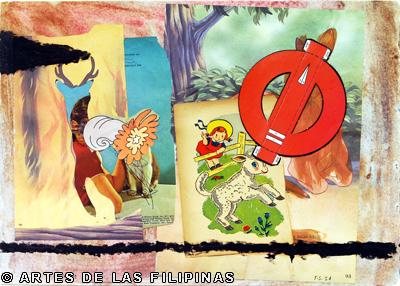
Thumper’s Song 24
You have been pursuing art for the past decade and have since made a mark. How do you prepare yourself when the next generation of artists is to change the current landscape of Philippine art?
That's to be expected. I will probably continue making art that interests me and hopefully will also interest future viewers of Philippine art.
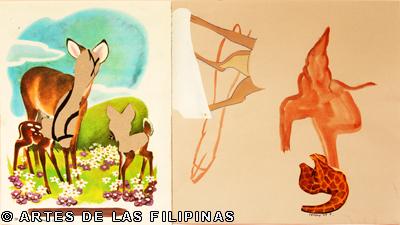
Thumper’s Song 4
Do you think that your works will hold a place in the history of Philippe art?
That's not for me to say. Only time can tell.

Thumper’s Song 8
Recent Articles
.png) FILIPINO ART COLLECTOR: ALEXANDER S. NARCISO
FILIPINO ART COLLECTOR: ALEXANDER S. NARCISOMarch 2024 - Alexander Narciso is a Philosophy graduate from the Ateneo de Manila University, a master’s degree holder in Industry Economics from the Center for Research and...
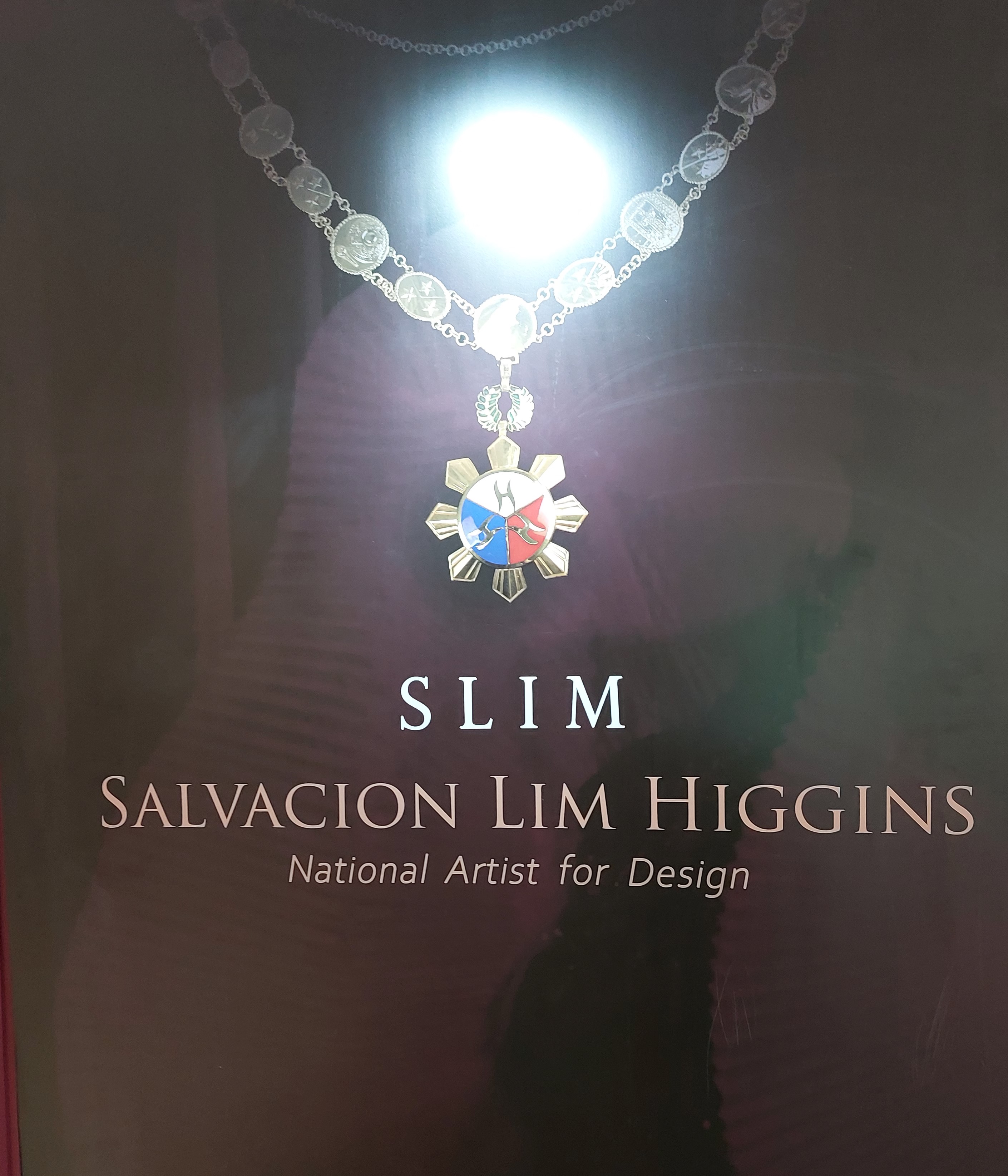 An Exhibition of the Design Legacy of Salvacion Lim Higgins
An Exhibition of the Design Legacy of Salvacion Lim HigginsSeptember 2022 – The fashion exhibition of Salvacion Lim Higgins hogged the headline once again when a part of her body of work was presented to the general public. The display...
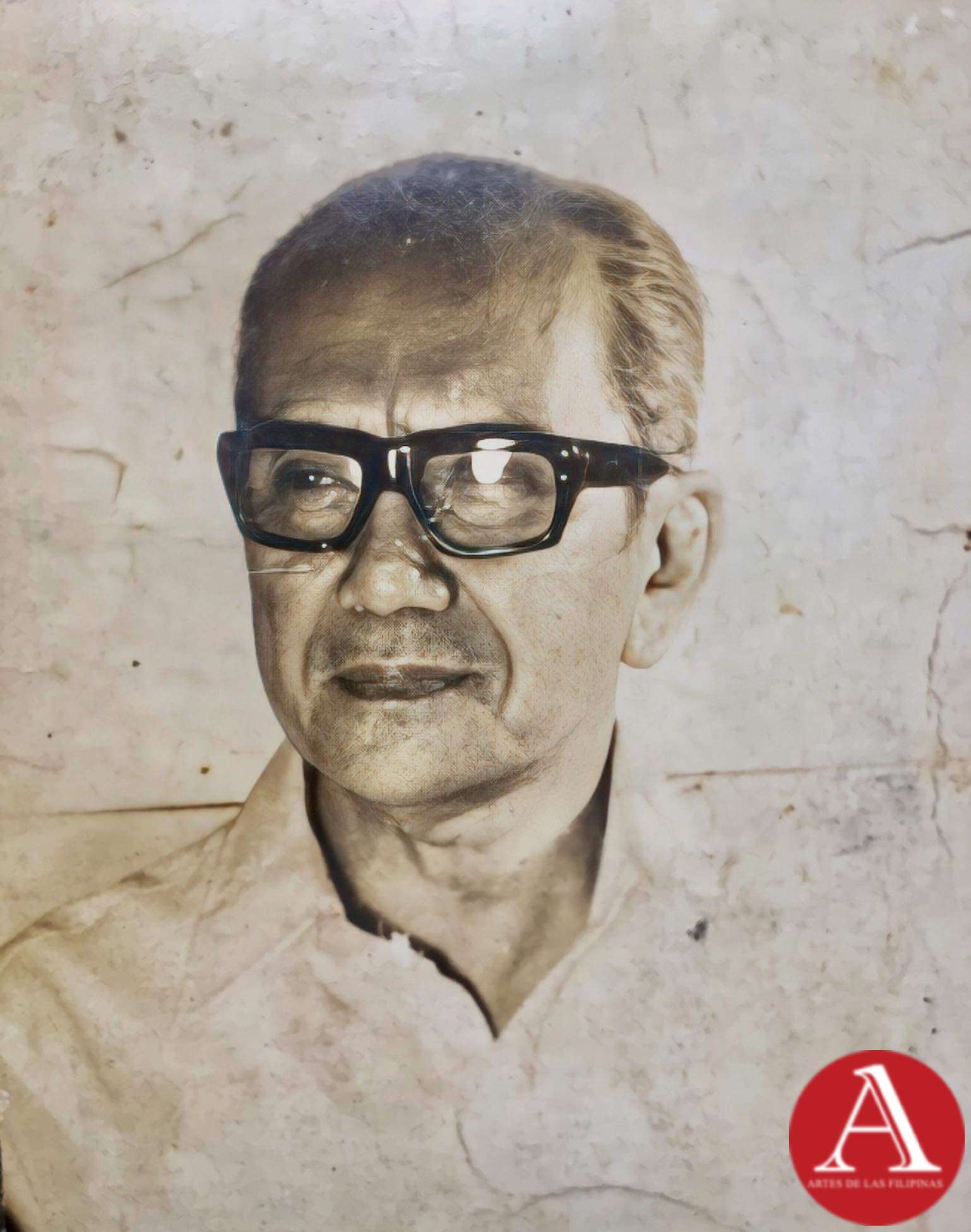 Jose Zabala Santos A Komiks Writer and Illustrator of All Time
Jose Zabala Santos A Komiks Writer and Illustrator of All TimeOne of the emblematic komiks writers in the Philippines, Jose Zabala Santos contributed to the success of the Golden Age of Philippine Komiks alongside his friends...
 Patis Tesoro's Busisi Textile Exhibition
Patis Tesoro's Busisi Textile Exhibition
The Philippine Art Book (First of Two Volumes) - Book Release April 2022 -- Artes de las Filipinas welcomed the year 2022 with its latest publication, The Philippine Art Book, a two-volume sourcebook of Filipino artists. The...
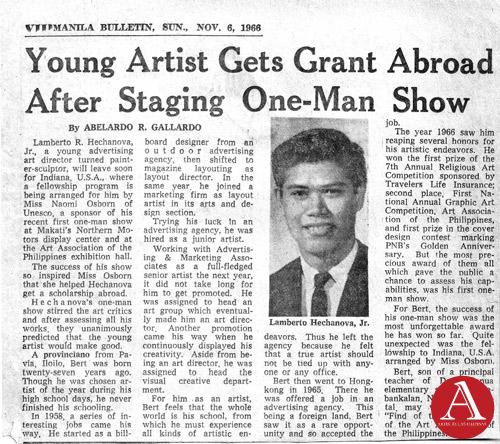 Lamberto R. Hechanova: Lost and Found
Lamberto R. Hechanova: Lost and FoundJune 2018-- A flurry of renewed interest was directed towards the works of Lamberto Hechanova who was reputed as an incubator of modernist painting and sculpture in the 1960s. His...
 European Artists at the Pere Lachaise Cemetery
European Artists at the Pere Lachaise CemeteryApril-May 2018--The Pere Lachaise Cemetery in the 20th arrondissement in Paris, France was opened on May 21, 1804 and was named after Père François de la Chaise (1624...
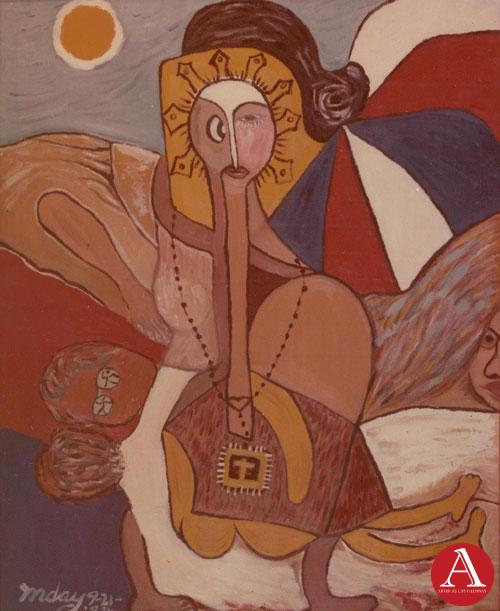 Inday Cadapan: The Modern Inday
Inday Cadapan: The Modern IndayOctober-November-December 2017--In 1979, Inday Cadapan was forty years old when she set out to find a visual structure that would allow her to voice out her opinion against poverty...
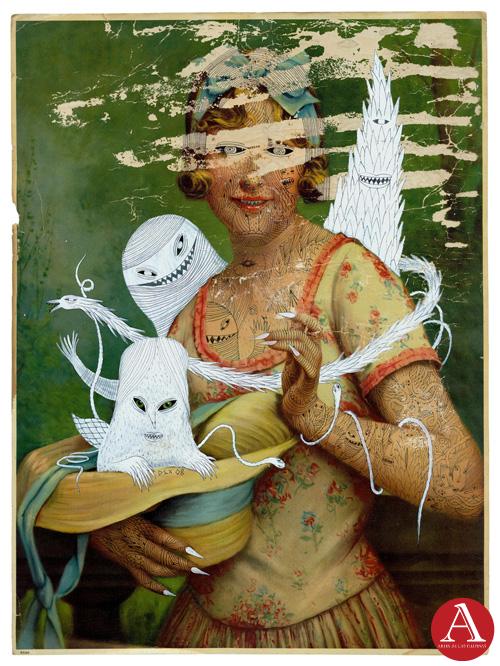 Dex Fernandez As He Likes It
Dex Fernandez As He Likes ItAugust-September 2017 -- Dex Fernandez began his art career in 2007, painting a repertoire of phantasmagoric images inhabited by angry mountains, robots with a diminutive sidekick,...
 Noel Soler Cuizon's Gesamtkunstwerk and Everything in Between
Noel Soler Cuizon's Gesamtkunstwerk and Everything in BetweenApril-May 2017—The public exhibition of Noel Soler Cuizon’s works began in 1987 when he was a member of Hulo, a group of alumni students of the Philippine Women’s...



